中文名:安东尼
种:番杏(Mesembs)
属:肉锥(conophytum)
拉丁名:Conophytum antonii [S. Hammer (2009), Cact. Succ. J. (US) 81(4), 191-195]
产地:Gamoep
以下来自英国TS的介绍1:
The wedge-shaped, bilobed bodies are about 6mm wide and shiny, light green in colour; the keels are usually outlined in red. The diurnal flowers are purple and it is probably a member of the tantillum/violaciflorum group. This was discovered a few km west of Gamoep by Anthony Mitchell many years ago and is named for him.
翻译:
形双叶体宽约6毫米,有光泽,呈浅绿色;龙骨的轮廓通常为红色。白天的花是紫色的,它可能是tantillum/violaciflorum属的一员。这是多年前安东尼·米切尔(Anthony Mitchell)在加莫普(Gamoep)以西几公里处发现的,并以他的名字命名。
以下来自英国TS的介绍2:
As far as is known, this recently-described species occurs on just one quartzite hill. It was first observed by Anthony Mitchell (hence the name) in the early 1980s but only introduced into cultivation when refound by Hammer and Arthurs about 20 years later. It is probably related to the somewhat larger C. violaciflorum which grows in the Springbok area.
翻译:
据所知,这种最近描述的物种只出现在一个石英岩山上。安东尼·米切尔(Anthony Mitchell)在20世纪80年代初首次发现了这种植物,但大约20年后,哈默和亚瑟重新发现了这种植物,才将其引入种植业。它可能与生长在斯普林博克( Springbok)地区的稍大的C. violaciflorum有关。
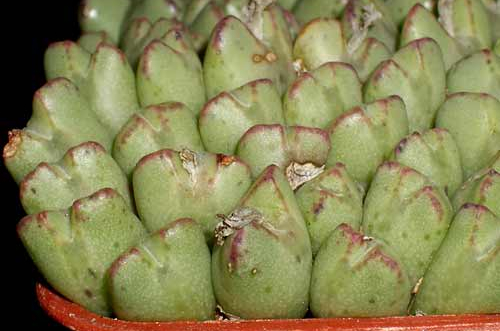
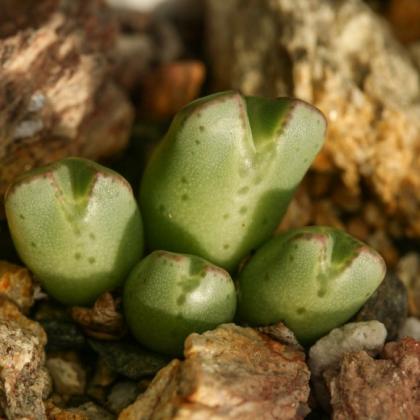
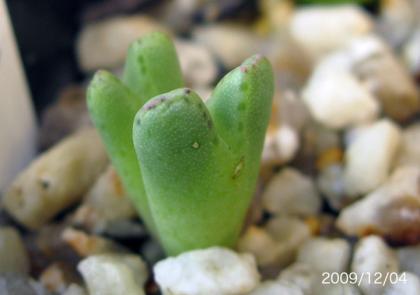
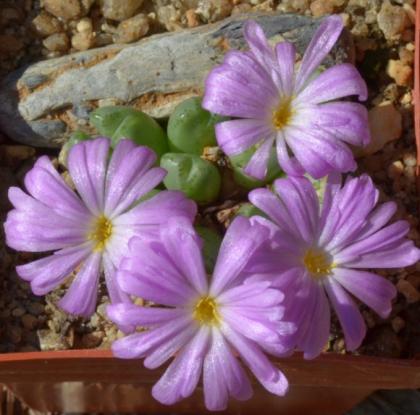
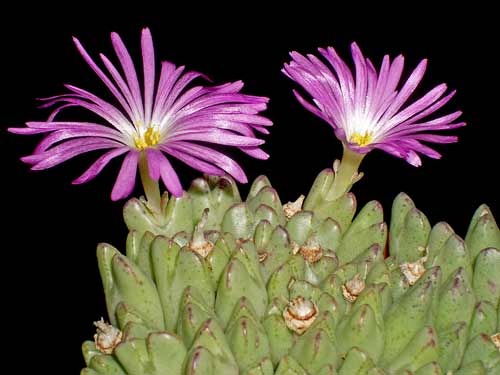
以下来自英国TS的介绍1:
The wedge-shaped, bilobed bodies are about 6mm wide and shiny, light green in colour; the keels are usually outlined in red. The diurnal flowers are purple and it is probably a member of the tantillum/violaciflorum group. This was discovered a few km west of Gamoep by Anthony Mitchell many years ago and is named for him.
翻译:
形双叶体宽约6毫米,有光泽,呈浅绿色;龙骨的轮廓通常为红色。白天的花是紫色的,它可能是tantillum/violaciflorum属的一员。这是多年前安东尼·米切尔(Anthony Mitchell)在加莫普(Gamoep)以西几公里处发现的,并以他的名字命名。
以下来自英国TS的介绍2:
As far as is known, this recently-described species occurs on just one quartzite hill. It was first observed by Anthony Mitchell (hence the name) in the early 1980s but only introduced into cultivation when refound by Hammer and Arthurs about 20 years later. It is probably related to the somewhat larger C. violaciflorum which grows in the Springbok area.
翻译:
据所知,这种最近描述的物种只出现在一个石英岩山上。安东尼·米切尔(Anthony Mitchell)在20世纪80年代初首次发现了这种植物,但大约20年后,哈默和亚瑟重新发现了这种植物,才将其引入种植业。它可能与生长在斯普林博克( Springbok)地区的稍大的C. violaciflorum有关。




